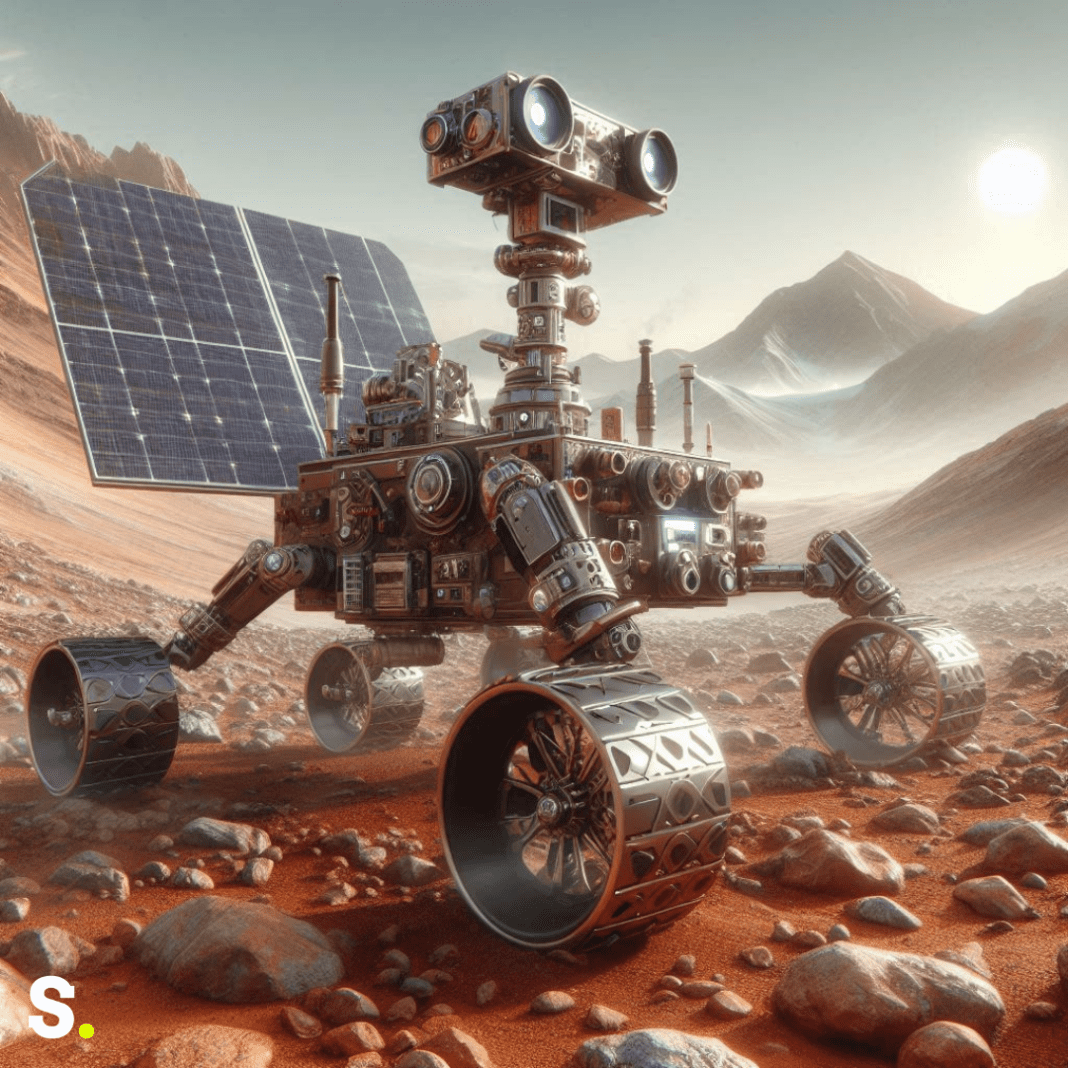Unveiling Robotic Explorers
Space exploration has traditionally been synonymous with human astronauts braving the vastness of space and spacecraft designed with cutting-edge technology. However, in recent years, a new breed of explorers has stepped into the spotlight—robots. These sophisticated machines have become indispensable in the quest to understand our universe, offering a way to explore environments that are otherwise inaccessible to humans.
Robotic rovers, in particular, are designed to traverse the surface of other planets and celestial bodies. Originally developed by NASA, these small, versatile vehicles are equipped to handle rough terrain and extreme conditions. Unlike astronauts, rovers don’t face physical challenges like exhaustion or life-threatening dangers. Instead, they are built to withstand harsh environments and perform complex scientific tasks.
Robotic rovers serve as the vanguard of space exploration. They act as eyes and ears for scientists, collecting data that would be impossible to gather otherwise. With their ability to survive and operate in hostile environments, these rovers extend our reach into the universe and provide valuable insights into the planets and moons they explore.
Exploring the Terrain: Types and Functions of Robotic Rovers
Robotic rovers are marvels of engineering, designed with multiple features that allow them to explore alien landscapes and gather critical scientific data. Here’s a closer look at the various functions and types of rovers:
Solar Power and Navigation
One of the fundamental aspects of rover design is their power source. Most rovers use solar panels to generate electricity. These panels convert sunlight into electrical energy, which powers the rover’s systems and instruments. Solar power is crucial for long-term missions, as it allows the rover to operate over extended periods without needing to rely on fuel or other resources.
Rovers are equipped with navigation cameras (Navcam) that help them move across the surface. These cameras provide a 360-degree view, allowing the rover to detect and avoid obstacles such as rocks and uneven terrain. This capability is essential for exploring planets like Mars, where the landscape can be rugged and challenging.
High-Resolution Imaging and Analysis
One of the primary functions of robotic rovers is to capture detailed images of the planetary surface. Equipped with high-resolution cameras, these rovers can take close-up photographs that reveal the texture, color, and composition of rocks and soil. These images provide scientists with valuable information about the planet’s geology.
In addition to cameras, rovers are fitted with various spectrometers. These instruments analyze the chemical composition of materials on the surface. By studying the spectra of reflected light, scientists can identify different types of rocks and minerals, search for signs of water, and determine the planet’s potential to support life.
Communication and Autonomy
Robotic rovers can be categorized into two main types based on their control mechanisms: human-controlled and autonomous.
- Human-Controlled Rovers: These rovers are operated remotely from Earth. Communication is facilitated through the Deep Space Network (DSN), which consists of large antennas located in various parts of the world. The DSN allows mission control teams to send commands to the rover and receive data. This communication is crucial for performing tasks and adjusting the rover’s operations based on real-time observations.
- Autonomous Rovers: Unlike their human-controlled counterparts, autonomous rovers are designed to perform tasks independently. Equipped with advanced algorithms and sensors, these rovers can navigate their environment, make decisions, and carry out experiments without constant human intervention. This autonomy is essential for missions that require rovers to operate in unpredictable conditions or during communication blackouts.
Robotic Landers and Orbiters: Additional Tools in Space Exploration
In addition to rovers, robotic landers and orbiters play significant roles in space exploration. Each type of machine is designed to perform specific tasks that complement the work of rovers and provide a comprehensive view of other planets and celestial bodies.
Robotic Landers
Robotic landers are designed to make a controlled descent to a planetary surface and conduct scientific investigations. Once they land, they remain stationary, providing valuable insights into the composition and structure of the landing site.
For instance, the InSight lander, which concluded its mission on Mars, was equipped to study the planet’s interior. It used instruments to measure seismic activity, heat flow, and magnetic fields. These measurements helped scientists understand the geological processes and history of Mars.
Robotic Orbiters
Robotic orbiters continuously circle planets and moons, gathering data from above. These machines are equipped with high-resolution cameras and scientific instruments that capture detailed images and analyze atmospheric conditions.
The Mars Reconnaissance Orbiter and the Lunar Reconnaissance Orbiter are prime examples. They provide a bird’s-eye view of the surfaces of Mars and the Moon, respectively. By studying these images, scientists can learn about the geological features, atmospheric conditions, and even monitor changes over time.
The Mechanics of Robotic Manipulators
Robotic manipulators act as the hands of robots, extending human capabilities in space. These devices are crucial for performing tasks that require precision and dexterity.
One notable example is the Canadarm2, used on the International Space Station. This robotic arm is capable of performing delicate operations such as repairing spacecraft and handling scientific experiments. Similarly, the robotic arm on the Perseverance rover demonstrates how manipulators can be used to collect samples and conduct intricate investigations.
Robotic manipulators are essential for extending human reach into space, allowing for tasks that would be challenging or impossible to perform manually. They offer incredible precision and reliability, contributing significantly to the success of space missions.
Design and Development of Robotic Rovers
Designing and developing robotic rovers involves several complex processes to ensure their functionality and durability in space. Examining the design considerations in more detail is what follows:
Basic Architecture
The core of a rover’s design is its electronic systems. Traditionally, these components are housed in a Warm Electronic Box (WEB), which protects the electronics from extreme temperatures and radiation. The WEB contains a high-end digital computer and software that control the rover’s operations.
Recent advancements have introduced a service-oriented architecture, where the rover’s software is decoupled from its hardware. This approach allows the software to be managed remotely, offering greater flexibility and control. The rover’s physical components are then separated from its operational software, enabling better communication and adaptability.
Power and Mobility
Power generation and mobility are critical aspects of rover design. Solar panels are commonly used to generate power, while advanced navigation systems ensure that the rover can move across diverse terrains. These features are essential for conducting long-term missions and gathering data from various locations.
Autonomy and Communication
Modern rovers are designed with a high degree of autonomy. They can navigate their environment, adjust to changes, and carry out activities on their own thanks to advanced algorithms. Communication systems are also vital for sending data back to Earth and receiving instructions.
Robotic rovers and their counterparts—landers, orbiters, and manipulators—play a crucial role in space exploration. They provide valuable data, perform complex tasks, and extend human capabilities into the far reaches of the universe. Each type of robotic explorer contributes uniquely to our understanding of the cosmos, offering a detailed and comprehensive view of the planets and celestial bodies we seek to explore.




